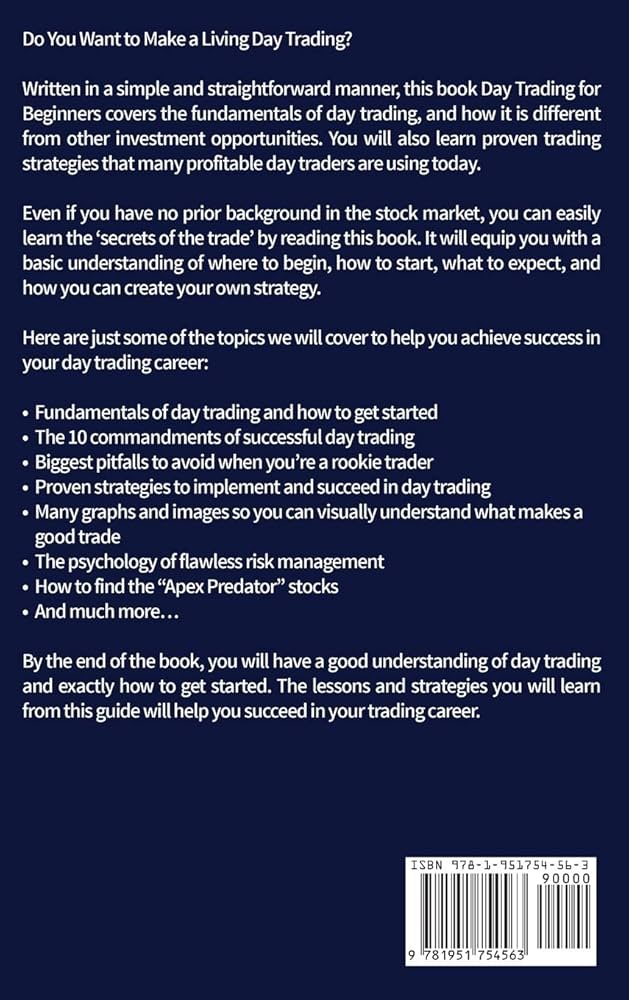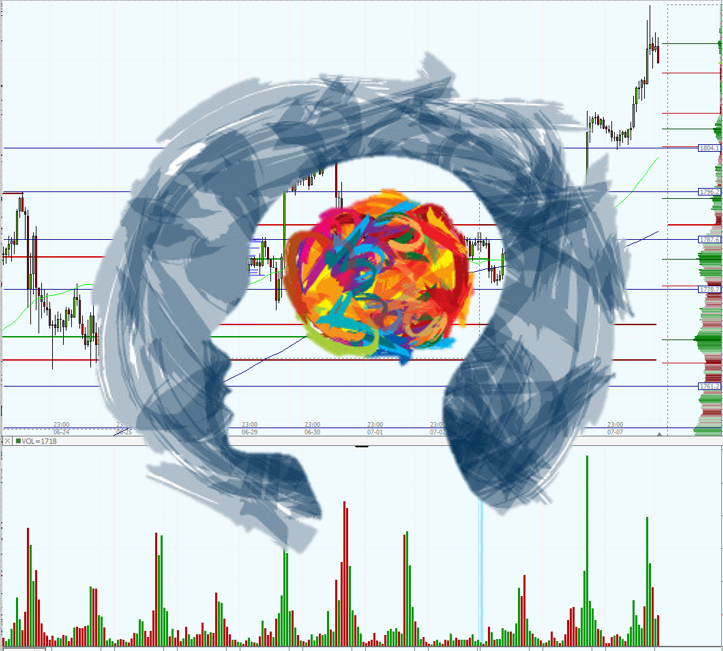Did you know that the only thing more volatile than the weather in April is the futures market? In this guide, we’ll explore the essentials of day trading futures, focusing on how to leverage technical analysis to enhance your trading strategies. You’ll learn what day trading futures entails, how to effectively read futures charts, and the importance of key indicators like support and resistance levels. Discover how to identify trends, recognize common chart patterns, and utilize moving averages. We’ll also cover the significance of volume, risk management strategies, and the psychological aspects of trading. With insights on the best tools and platforms and tips for backtesting your strategies, this article from DayTradingBusiness is designed to equip you with the knowledge to navigate the fast-paced world of futures trading successfully.
What is day trading futures and how does it work?
Day trading futures involves buying and selling futures contracts within the same trading day to capitalize on short-term price movements. Traders analyze market trends using technical analysis, focusing on charts, indicators, and price patterns.
To start, a trader selects a futures market, such as commodities or indices. They identify entry and exit points based on signals from their technical analysis tools. When a trader sees a potential opportunity, they place a buy or sell order. The goal is to close all positions before the market closes, locking in profits or limiting losses.
Key strategies include scalping for small profits and momentum trading to ride trends. Effective risk management is crucial, often involving stop-loss orders to protect against significant losses.
How can I use technical analysis for day trading futures?
To use technical analysis for day trading futures, follow these steps:
1. Choose Your Chart: Use intraday charts (like 1-minute or 5-minute) for real-time analysis.
2. Identify Trends: Look for price trends using moving averages (e.g., 50-day or 200-day) to determine the market direction.
3. Use Indicators: Apply indicators like RSI, MACD, or Bollinger Bands to assess momentum and overbought/oversold conditions.
4. Support and Resistance: Identify key support and resistance levels to make entry and exit decisions.
5. Volume Analysis: Monitor trading volume to confirm trends; higher volume often validates price movements.
6. Candlestick Patterns: Learn to read candlestick patterns for potential reversals or continuations.
7. Set Stop Loss and Take Profit: Establish clear stop-loss and take-profit levels based on your risk tolerance.
8. Backtest Strategies: Test your approach on historical data to refine your strategy before live trading.
9. Stay Updated: Keep an eye on market news and events that may influence futures prices.
By applying these technical analysis techniques, you can enhance your day trading strategy in the futures market.
What are the key indicators for technical analysis in futures trading?
Key indicators for technical analysis in futures trading include:
1. Moving Averages: Identify trends by smoothing price data over specific periods.
2. Relative Strength Index (RSI): Measures momentum to determine overbought or oversold conditions.
3. Bollinger Bands: Show volatility and potential price reversals based on standard deviations from a moving average.
4. Volume: Indicates the strength of a price movement; higher volume can confirm trends.
5. MACD (Moving Average Convergence Divergence): Highlights changes in the strength, direction, momentum, and duration of a trend.
6. Fibonacci Retracement: Identifies potential support and resistance levels based on key Fibonacci levels.
7. Stochastic Oscillator: Compares a security's closing price to its price range over a specific period to find potential reversal points.
These indicators help traders make informed decisions about entry and exit points in futures markets.
How do I read futures charts effectively?
To read futures charts effectively, start by familiarizing yourself with key chart types like candlestick and line charts. Focus on identifying trends—look for higher highs and higher lows in an uptrend, or lower highs and lower lows in a downtrend. Use technical indicators such as moving averages to determine potential entry and exit points. Pay attention to support and resistance levels, as these can indicate where prices may reverse. Lastly, practice analyzing volume alongside price movements to confirm trends and signals. Regularly reviewing your trades will help refine your skills over time.
What role do support and resistance levels play in day trading futures?
Support and resistance levels are crucial in day trading futures as they indicate where prices may reverse or consolidate. Support levels act as a price floor, preventing further declines, while resistance levels serve as a ceiling, capping price increases. Traders use these levels to identify entry and exit points, set stop-loss orders, and gauge market sentiment. Successful trades often hinge on recognizing these levels to capitalize on price movements effectively.
How can I identify trends in futures markets?

To identify trends in futures markets, start by using technical analysis tools like moving averages, trend lines, and price patterns. Look for higher highs and higher lows to confirm an uptrend, or lower highs and lower lows for a downtrend. Utilize indicators like the Relative Strength Index (RSI) and Moving Average Convergence Divergence (MACD) to gauge momentum. Pay attention to volume spikes, as they can signal strong trends. Lastly, check news and economic reports that may impact market sentiment.
What are common chart patterns in futures trading?
Common chart patterns in futures trading include:
1. Head and Shoulders: Indicates a reversal trend.
2. Double Top/Bottom: Signals potential trend reversals.
3. Triangles (Ascending, Descending, Symmetrical): Suggests continuation or reversal depending on the breakout direction.
4. Flags and Pennants: Often indicate short-term consolidation before a continuation of the trend.
5. Cup and Handle: Suggests bullish continuation after a consolidation period.
Recognizing these patterns can help traders make informed decisions.
How do I use moving averages in day trading futures?
Use moving averages in day trading futures by following these steps:
1. Select the Type: Choose between simple moving averages (SMA) and exponential moving averages (EMA). EMAs react faster to price changes, which can be beneficial in day trading.
2. Set Timeframes: Common periods are the 9-day and 21-day EMAs for short-term trades. Adjust based on your trading style.
3. Identify Trends: Use moving averages to determine the market trend. If the price is above the moving average, it signals an uptrend; below indicates a downtrend.
4. Generate Signals: Look for crossovers. A buy signal occurs when a shorter-term average crosses above a longer-term average. A sell signal happens when it crosses below.
5. Combine with Other Indicators: Enhance your strategy by pairing moving averages with other tools like RSI or MACD to confirm signals.
6. Set Stop Losses: Use moving averages to place stop-loss orders. Position them a few ticks below the moving average in a long trade to protect against sudden reversals.
7. Backtest Your Strategy: Test your moving average strategy on historical data to refine your approach before live trading.
Implement these steps to effectively use moving averages in your day trading futures strategy.
What is the significance of volume in futures trading?
Volume in futures trading indicates the number of contracts traded in a specific period. High volume often signals strong interest and can confirm the strength of a price move, while low volume may suggest weakness or uncertainty. Traders use volume to gauge market momentum, identify potential reversals, and make informed decisions. Understanding volume helps in setting entry and exit points, enhancing overall trading strategy and risk management.
What Are Futures in Day Trading and How Can Technical Analysis Improve Trading Strategies?
Futures in day trading are contracts to buy or sell an asset at a predetermined price on a specific date in the future. Traders use them to speculate on price movements of commodities, currencies, or indices. Day trading futures involves executing trades within the same day to capitalize on short-term market fluctuations.
Learn more about: What Are Futures in Day Trading?
Learn about How to Use Technical Analysis for Options Day Trading
How can I implement risk management strategies in day trading futures?

To implement risk management strategies in day trading futures, follow these steps:
1. Set a Risk Limit: Decide how much capital you're willing to risk on each trade, typically 1-2% of your trading account.
2. Use Stop-Loss Orders: Place stop-loss orders to automatically exit a trade if it moves against you, limiting potential losses.
3. Define Profit Targets: Establish clear profit targets for each trade to ensure you lock in gains before market reversals.
4. Diversify Positions: Avoid putting all your capital into a single trade; diversify across different futures contracts.
5. Monitor Volatility: Adjust position sizes based on market volatility; trade smaller sizes during high volatility.
6. Keep a Trading Journal: Record your trades, strategies, and outcomes to analyze performance and refine your approach.
7. Review and Adapt: Regularly assess your risk management strategies and adjust them based on market conditions and personal performance.
By applying these strategies, you can effectively manage risk while day trading futures.
Learn about How to Backtest Futures Day Trading Strategies
What are the best timeframes for technical analysis in futures trading?
The best timeframes for technical analysis in futures trading are typically 1-minute, 5-minute, and 15-minute charts for day traders. For scalping, use 1-minute charts to capture quick price movements. Swing traders often prefer 30-minute to 4-hour charts to identify trends over several days. Longer-term traders may opt for daily or weekly charts for broader market analysis. The choice depends on your trading style and strategy.
How do I set stop-loss orders when day trading futures?
To set stop-loss orders when day trading futures, first determine your risk tolerance and the maximum loss you can accept on a trade. Use technical analysis to identify key support and resistance levels. Place your stop-loss order just below support for long positions or just above resistance for short positions. Adjust the stop-loss as the trade moves in your favor to lock in profits. Always review and refine your strategy based on market conditions.
Learn about How to Set Realistic Goals in Day Trading
What are the psychological aspects of day trading futures?

The psychological aspects of day trading futures include emotional control, risk management, and decision-making under pressure. Traders must manage fear and greed to avoid impulsive actions. Developing discipline to stick to a trading plan is crucial. Additionally, maintaining a positive mindset helps in coping with losses and setbacks. Self-awareness is key; understanding personal triggers can improve performance. Finally, the ability to stay calm during volatile market conditions can significantly impact trading success.
Learn about Psychological Aspects of Day Trading Futures
How can I develop a trading strategy using technical analysis?
To develop a trading strategy for day trading futures using technical analysis, follow these steps:
1. Choose Your Market: Select a futures market you want to trade, like commodities or indexes.
2. Select Indicators: Use key technical indicators such as moving averages, RSI, or MACD to identify trends and momentum.
3. Set Entry and Exit Points: Define clear entry and exit points based on your indicators. For example, enter a trade when the price crosses above a moving average.
4. Establish Risk Management: Determine your risk per trade, using stop-loss orders to protect your capital.
5. Backtest Your Strategy: Test your strategy on historical data to see how it would have performed.
6. Refine and Adjust: Analyze results and tweak your strategy based on performance.
7. Stay Informed: Keep up with market news and events that might affect your trades.
8. Practice Consistently: Use a demo account to practice your strategy without risking real money.
This structured approach will help you create a solid trading strategy using technical analysis for day trading futures.
Learn about How to Develop Your Own Scalping Strategy for Day Trading
What tools and platforms are best for day trading futures?
The best tools and platforms for day trading futures include:
1. Trading Platforms: Thinkorswim, NinjaTrader, and TradeStation offer robust charting and analysis tools.
2. Charting Software: TradingView provides advanced technical analysis features with user-friendly charts.
3. Market Data: CQG and Interactive Brokers deliver real-time data and analytics.
4. Risk Management Tools: Trade Ideas and Edgewonk help optimize trading strategies and track performance.
5. Brokerage Accounts: Choose brokers like TD Ameritrade or E*TRADE for low commissions and reliable execution.
These tools enhance your technical analysis and improve trading efficiency.
Learn about Tools to Find the Best Day Trading Stocks
How can I backtest my trading strategies for futures?
To backtest your trading strategies for futures, follow these steps:
1. Select a Trading Platform: Use software like TradingView, NinjaTrader, or MetaTrader that allows backtesting.
2. Gather Historical Data: Obtain historical price data for the futures contracts you want to test. Ensure it includes various market conditions.
3. Define Your Strategy: Clearly entry and exit points, risk management rules, and other criteria.
4. Input Strategy into Software: Program your strategy in the trading platform using its scripting language or built-in tools.
5. Run Backtest: Execute the backtest over your historical data to see how the strategy would have performed.
6. Analyze Results: Review metrics like win rate, profit factor, and maximum drawdown to evaluate effectiveness.
7. Refine Strategy: Adjust your strategy based on backtest results and repeat the process for further optimization.
8. Forward Test: After backtesting, test the strategy in a demo account to see how it performs in real-time conditions.
By following these steps, you can effectively backtest your futures trading strategies.
Learn about How to Backtest Futures Day Trading Strategies
Conclusion about Day Trading Futures: A Guide to Technical Analysis
In conclusion, mastering day trading futures requires a solid grasp of technical analysis, key indicators, effective chart reading, and a well-defined trading strategy. Understanding support and resistance levels, identifying trends, and implementing risk management are essential for success. By leveraging the right tools and platforms, and continually refining your approach through backtesting, you can enhance your trading performance. For comprehensive guidance and resources, DayTradingBusiness is here to support your journey in futures trading.
Learn about How to Use Technical Analysis for Options Day Trading
Sources:
- Currency Orders and Exchange-Rate Dynamics: Explaining the ...
- Visualizing profitability: A heatmap approach to evaluate Bitcoin ...
- Artificial intelligence techniques in financial trading: A systematic ...
- An empirical study of the self-fulfilling prophecy effect in Chinese ...
- A Reflective LLM-based Agent to Guide Zero-shot Cryptocurrency ...